What Kinds of Animals Live Here
in the Rocky Mountains?
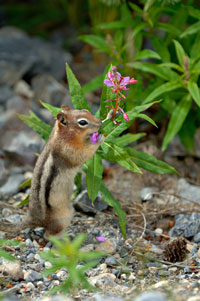
Golden Mantled
Ground Squirrel
Scott Rowed
Nature is a delicate balance of all things, and life here in the mountains is no different. Plants and animals survive in the places that allow them to survive, and with habitats dwindling and species disappearing, that delicate balance is easily thrown off. Therefore, as we are slowly learning in regions all over the earth, it is very important that we ensure that habitats of all kinds are secure for the future.
Let's first take a look at the different environments and habitats the mountains here provide.
LIFE ZONES 101
To make it simple, let's use three regions to describe the different life zones here in the Rockies:
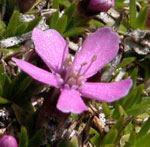
Moss Campion
Marcel Finnigan
- valleys and lower slopes of mountains
- warmer temperatures
- windy (warm-wind chinooks eat up snow, leaving light snow cover)
- plentiful food in the form of pants and animals
- forests of both evergreen and deciduous trees
- wetlands
- grassy meadows
- flowers and bushes
- used by people, highways, railways
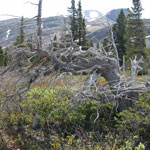
Dead Krummholz
Marcel Finnigan
- high mountain valleys or mountain slopes between the montane and treeline (The highest point you can see trees on a mountain is called the treeline.)
- more precipitation - often snow (which is why you can see snow in the summer!!)
- evergreen forests and higher "krummholz", German for "crooked wood" - very old and wind-blown evergreens.
- short growing season
- smaller variety of plantlife
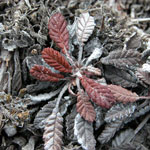
Alpine Vegetation
Marcel Finnigan
- area above the treeline, meaning there are no trees able to survive in this harsh environment
- coolest temperatures
- most precipitation is snow
- windy
- bare rock or rocky soil
- tundra-like meadows
- wildflowers
- grasses, lichens and mosses
- shortest growing season
These life zones represent life at different elevations in the Rockies. Plants and animals have their own preferences as to where their needs can be best met to ensure their survival in this mountainous area. One animal species, or even the lack of one, can often tell the tale on how other animals in the area are doing.
Now on to some of the animals that live in these three life zones, starting at the top and working our way down:
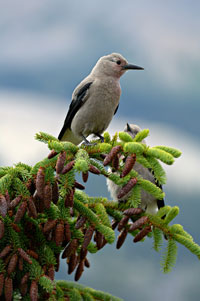
Clark's Nutcracker
Scott Rowed
- Mountain Goats
- Big Horn Sheep
- Pikas
- Hoary Marmots
- Birds such as the Ptarmigan
- Grizzly Bears
- Caribou
- Grizzly Bears
- Moose
- Lynx
- Big Horn Sheep
- Caribou
- Porcupine
- Pine Marten
- Red Squirrels
- Least Chipmunk
- Pikas
- Mice
- Birds
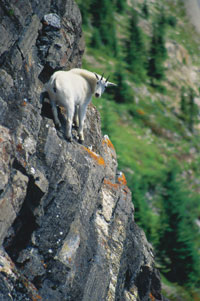
Mountain Goat On the Edge
Photo courtesy
Banff Lake Louise Tourism
- White-tail Deer
- Mule Deer
- Elk
- Caribou
- Coyote
- Wolves
- Big Horn Sheep
- Cougars
- Grizzly Bears
- Black Bears
- Moose
- Beavers
- Columbian Ground Squirrel
- Red Squirrels
- Pikas
- Mice
- Birds
Ready to do some observing of your own? Here are some tips on wildlife watching to help you make it a safe experience for all involved.
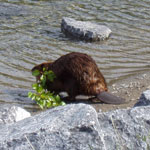
Busy Beaver
Kaori Yasui
Interested in geology? You can also get a peek at what life was like in this area before the Rocky Mountains! Take a close look at the coral and sealife fossils, and imagine what it must have been like here millions of years ago when there was an ancient sea.








